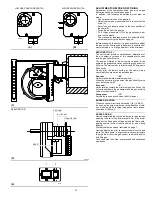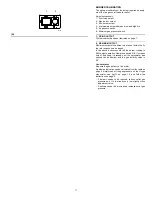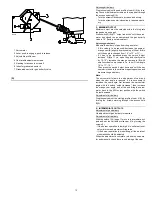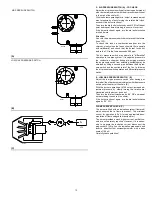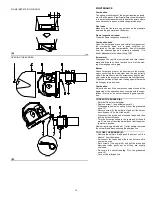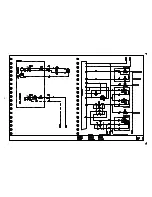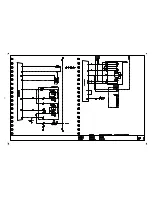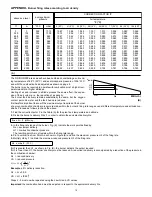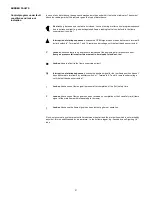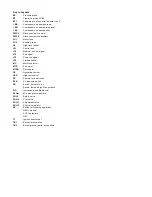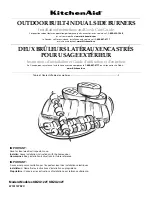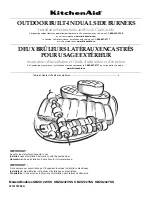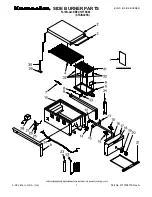
20
BURNER OPERATION
BURNER STARTING
• Operating closes.
Fan motor starts.
• Servomotor starts:
90° rotation to right, until contact is made on red cam.
The air damper is positioned to MAX. output.
• Pre-purge stage with air delivery at MAX. output.
• After pre-purge stage, servomotor rotates to left up to
the angle set on blu cam for MIN. output.
• The air damper and the gas butterfly are positioned to
MIN. output.
• Ignition electrode strikes a spark.
• Pilot valve opens. The pilot flame is ignited.
• After about 12s the main flame ignites and starting
cycle ends.
STEADY STATE OPERATION
Burner without modulating control RWF40
At the end of the starting cycle, the servomotor control
then passes to the load control for boiler pressure or
temperature.
(The flame safeguard continues, however, to check that
the flame is present and that the air pressure switch is in
the correct position.)
• If the temperature or pressure is low, the burner pro-
gressively increases its output to the MAX. value.
• If the temperature or pressure is high, the burner pro-
gressively decreases its output to the MIN. value.
And so on.
• The burner locks out when demand for heat is less
than the heat supplied by the burner at min. output.
Load control opens. The servomotor returns to the 0°
angle limited by contact with orange cam. The air
damper closes completely to reduce thermal disper-
sion to a minimum.
Every time output is changed, the servomotor automati-
cally modifies gas delivery (gas butterfly valve) and air
delivery (fan damper).
Burner with modulating control RWF40
See the handbook enclosed with the modulating control.
Switching times are given in seconds, in the burner star-
tup sequence.
*
Variable to air damper setting.
Legend for the times
t1
Pre-purge time with air damper open
t2
Safety time
t3
Pre-ignition time, short (ignition transformer on
terminal 16)
t4
Interval between start of t2 and release of valve
at terminal 19
t5
Interval between end of t4 and release of load
controller or valve at terminal 20
t5
Running time of air damper into OPEN position
t6
Running time of air damper into low-flame posi-
tion (MIN)
t7
Permissible after-burn time
t8
Interval until OPEN command for the air damper
is given
t9
Running time of pilot
t10
Interval between end of t4 and end start up
sequence
FIRING FAILURE
If the burner does not fire, it locks out within 2.5 seconds
from opening the pilot valve and then within 5 seconds
from opening the main valves.
BURNER FLAME GOES OUT DURING OPERATION
If the flame should accidentally go out during operation,
the burner will lock out within 1s.
LFL 1.335
Series 01
t1
t2
t3
t4
t5
30s
2s
4s
12.5s
*
t6
t7
t8
t9
t10
*
12s
4s
16s
10s
(A)
Full Modulation
D7780
Low - High
D7781
(B)
t 4
t 10
t 4
t 10





